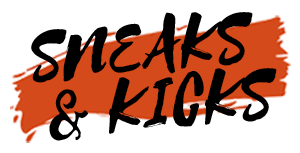The NPD group, a retail sales tracking firm, reports that first quarter sales for 2022 indicate shifts in U.S. footwear shopping preferences—starting with less buying in men’s (sales down 6 percent) and children’s (down 12 percent). The declines are likely signs of the record inflation’s impact on shopping.
Up against last year’s stimulus-fueled comps, footwear unit sales and revenue both declined in the first quarter versus the previous year. U.S. sales revenue fell by 3 percent and unit sales declined by 12 percent, while average prices increased by 11 percent. Compared to Q1 2019, revenue for the quarter was 3 percent higher and unit sales were 10 percent lower.
However, NPD reports there is also a larger trend at play: sales for some of the top footwear brands have softened versus last year and underperforming compared to the rest of the market. There is a lot of movement taking place in the industry, particularly in the athletic space, as up-and-coming brands and new styles and technologies join the market. NPD footwear analysts Matt Powell and Beth Goldstein report it could be the beginnings of a seismic shift within the industry.
In the meantime, revenue from women’s footwear in Q1 increased by 4 percent. The average selling price (ASP) for women’s footwear increased more than other categories, which fueled its revenue increase. The women’s market also benefited from improved fashion footwear sales, while the men’s and children’s markets were more reliant on sport leisure footwear, which experienced softer sales.
Overall, sport leisure is the largest category in the industry. Revenue in this category declined in the mid-teens in Q1, with units down in the high teens and average selling prices higher by mid-single digits. Within this category, retro-style footwear revenue fell due to weakness from Nike, Jordan and Adidas. Sport slides were down by 20 percent and skate shoe revenue decreased by low single digits.
Nike’s sport leisure sales declined by about 25 percent, while Jordan and Adidas dropped in the mid-teens. New Balance grew by about 25 percent, while Puma, Skechers, Converse and Vans all declined in this category.
Sales revenue from fashion footwear (includes dress, casual and slippers) grew by 11 percent, as unit sales fell by 11 percent. The only fashion segment to post unit sales growth was slippers, with sales rising across all wearers. Dress shoes accounted for over two-thirds of the fashion category’s growth, but the segment remained soft compared to 2019.
Within the fashion category, revenue from private label brands collectively declined slightly. Sales of Crocs grew 9 percent and Steve Madden grew 57 percent, due to rising sales for sandals. Skechers sales declined 14 percent. Clarks, Birkenstock and Ugg each declined in the mid-single digits.
Performance footwear outperformed the overall footwear market in Q1. While revenue was up slightly, average price also declined slightly, a major slowdown from the 2021 rate. Unit sales increased in the low single-digits. Running shoes captured the largest portion of performance footwear sales and experienced a slight revenue decline compared to Q1 2021. Walking, soccer/football and training shoes all had solid growth for the quarter. Basketball continued its freefall, with weakness from Nike, the market leader.
Nike performance footwear declined about 25 percent, with weakness in virtually every category. Adidas performance sales gained in the mid-teens. Skechers improved by more than a third. Brooks had a slight decline, while Under Armour grew in the high single digits. New Balance declined about 20 percent and Asics fell by mid-single digits. Hoka, On, Puma and Saucony all had good growth for the quarter.
Outdoor footwear revenue declined by mid-single digits and unit sales declined by high single digits, while average selling price grew by mid-single digits. Revenue from hiking, trekking and mountaineering categories declined by low single digits, while boots including hunting and fishing boots, dropped by mid-single digits. Ugg outdoor footwear revenue declined by mid-single digits, while Columbia was down slightly and Merrell declined by mid-teen digits. On the bright side, Timberland, Keen, Skechers and private label brands experienced nice growth.
Also in the plus column, work/safety footwear revenue grew by 10 percent. Sneaker silhouettes accounted for almost 90 percent of the growth. Boots declined in the low single-digits, but remained up in the teens, versus 2019. Private-label sales collectively grew in the mid-single-digits, and Skechers and Wolverine both increased slightly. Reebok sales more than doubled, and Timberland Pro grew in the low teens.
As for what Q2 holds, NPD projects a return to more pre-pandemic behaviors, such as more in-person work, travel and attendance at events and gatherings. These activities will help to fuel continued improvement in sales on the fashion side, while interest in fitness and the outdoors will help to drive the athletic business. However, macro pressures on the consumer combined with tough comparisons from 2021 will likely curb growth.
